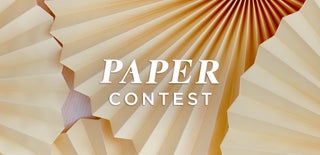Introduction: Flower Flip-Flap Activity
It's that time of the year! Spring is just around the corner (somewhat) and I am doing my reproduction of organisms unit with my seventh grade students. One of the big parts of this unit is my flower reproduction lab which I posted on instructables last year. I thought I would include the activity I created that accompanies the flower dissection lab. I do this project prior to doing the dissection lab and students are encouraged to use it during the lab to help them identify the components of the flowers and their functions. I thought I would share it with everyone so that they can use it with their own flower dissections. This is a fantastic study guide for students and it also allows a bit of craftiness in the science classroom. The kids are always happy to use something that they have created with their own hands and I always get positive reports back from the kids on this activity's utility and ease of use. If you have any questions I am more than happy to help out.
Supplies
Printed worksheets (one set per students)
Scissors (one pair per student)
Glue sticks (one per student)
Clear tape (one per table)
Colored pencils
Step 1: Print Off the Materials for the Lab
You are going to need to print enough materials for all of your students. You can find all of the necessary sheets using this Google Slides packet I created. This includes:
One Instruction sheet per student with flower template printed on the back
One set of flip flap cards per student
A set of answer keys (I print 10) so that students can easily check their work during class
Step 2: The Lesson - Cut Up the Cards
Students will have to cut out the little cards. I try to give them an entire class period to do this since it is a real pain for them to keep track of the little cards for the next day. They are are going to paste down the definitions for each flower part and then tape a little flap on top of the pasted card with the vocabulary word for the flower part. Before they do this they should use the answer key to make sure they have matched up the cards accurately. You will only need the printed sheets, scissors, glue sticks, and clear tape to do this activity.
Step 3: The Lesson - Pasting, Taping, and Adding the Steps of Flower Pollination
Once students are certain that their work is checked and everything is accurate, they will need to paste down the definitions and then tape the proper flower part on top. They will then use the "steps to flower reproduction" cards and the blank cards to accurately show how a flower turns from bud to fruit with seeds. They will paste down the step for flower reproduction (they are numbered so there is no need for an answer key here) and then they will draw a small picture that represents that specific step in flower reproduction. This card they will tape on top of the reproductive step just as the other cards previously. This allows for the picture to trigger a memory of the step once again allowing them to use this activity as an excellent review.
Step 4: Using the Final Product As a Tool
During our flower dissection students often have a multitude of questions. My first response is always "did you check the information I put on the front of the packet first?" If they say "yes" my next suggestion is always for them to take out the flower flip-flap activity we did prior to the lab, if they haven't already. I want my students to be problem solvers and this activity has lent itself to that goal, making my students more independent and more capable of accessing prior knowledge when presented with new challenges. I hope that you try out this activity and couple it with my flower dissection lab. Tell me what you think and think spring!!

Participated in the
Paper Contest













